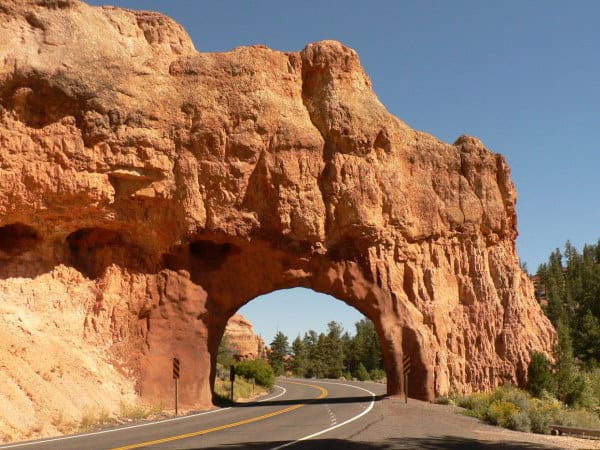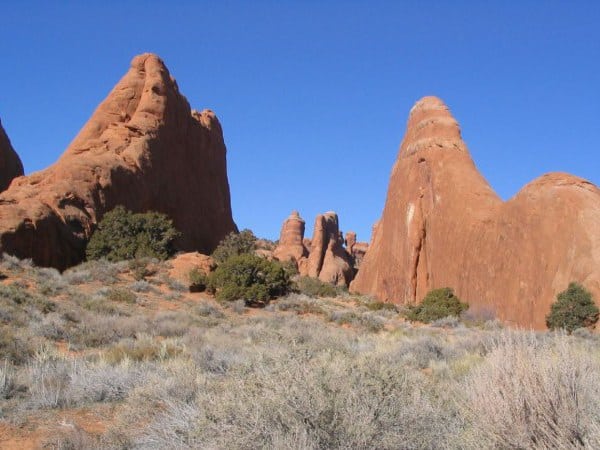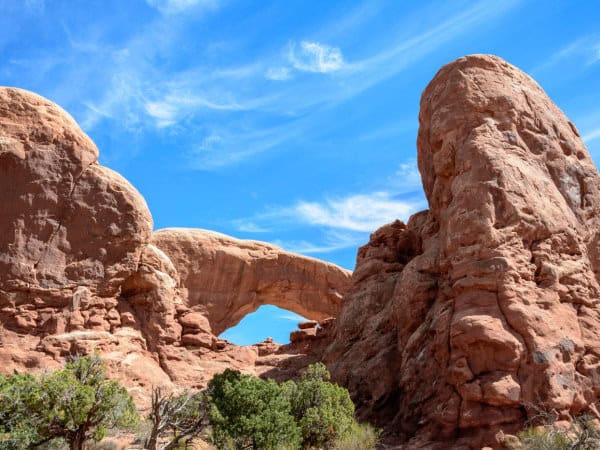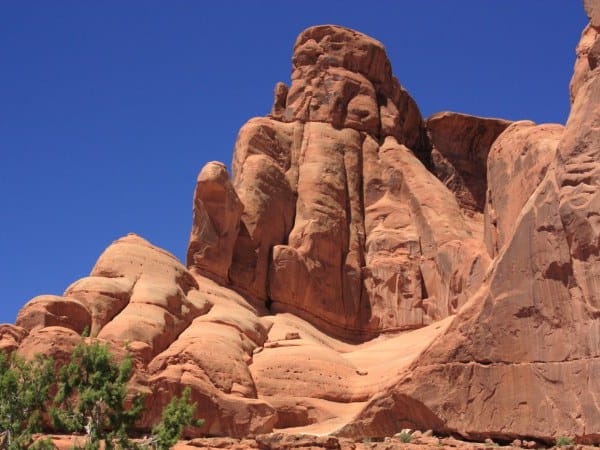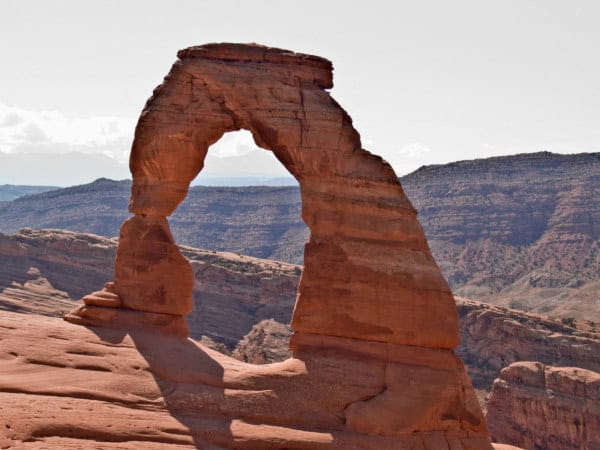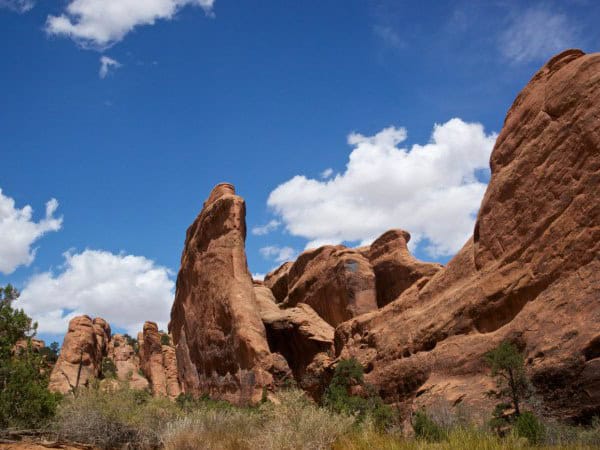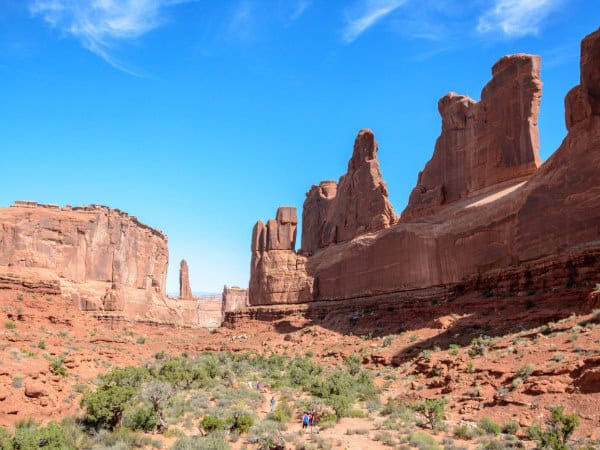
Arches National Park, located in eastern Utah near the town of Moab, is a stunning landscape filled with over 2,000 natural stone arches, dramatic rock formations, and a diverse range of flora and fauna. This unique and breathtaking park offers visitors numerous opportunities for adventure, exploration, and photography. Whether you’re a first-time visitor or a seasoned adventurer, here are some comprehensive tips to help you make the most of your visit to Arches National Park.
Planning Your Visit
- Best Time to Visit:
- Spring (April to May) and Fall (September to October): These are the best times to visit Arches National Park due to the mild temperatures, ranging from 60°F to 80°F. The weather is perfect for hiking and exploring the park.
- Summer (June to August): Summers can be extremely hot, with temperatures often exceeding 100°F. If you plan to visit during the summer, start your hikes early in the morning or late in the evening to avoid the heat.
- Winter (November to March): Winters are less crowded, and while the temperatures can drop below freezing, the snow-capped arches create a picturesque scene. Make sure to check for road and trail conditions as they can be icy.
- Duration of Stay:
- A typical visit to Arches National Park can range from a half-day trip to a full week, depending on your interests and available time. For a comprehensive experience, plan to spend at least two to three days exploring the park.
- Entry Fees and Passes:
- The park charges an entrance fee, which can be paid at the entrance station or online in advance. Consider purchasing the America the Beautiful National Parks and Federal Recreational Lands Pass if you plan to visit multiple national parks within a year.
- Reservations:
- During peak seasons, the park may implement a timed entry system to manage crowds and preserve the natural environment. Check the National Park Service website for current reservation requirements and make your reservations well in advance.
Getting to Arches National Park
- By Car:
- Arches National Park is easily accessible by car. The main entrance is located just 5 miles north of Moab, Utah, off U.S. Highway 191. The park’s scenic drive is approximately 18 miles long and provides access to many of the park’s key attractions.
- By Air:
- The closest major airport is Grand Junction Regional Airport (GJT) in Colorado, about 100 miles from the park. Salt Lake City International Airport (SLC) is approximately 230 miles away and offers more flight options. Car rentals are available at both airports for the drive to Arches.
- By Public Transportation:
- Public transportation options are limited, but some shuttle services and guided tours operate from Moab to Arches National Park. Renting a car provides the most flexibility for exploring the park.
Accommodations and Dining
- Camping:
- Devils Garden Campground: The only campground within the park, it offers 50 sites, including both tent and RV spaces. Reservations are highly recommended, especially during peak seasons. The campground provides basic amenities such as restrooms, picnic tables, and fire rings.
- Backcountry Camping: Permits are required for backcountry camping. Contact the visitor center for more information on obtaining a permit and recommended camping locations.
- Lodging in Moab:
- Moab offers a wide range of accommodations, from budget motels to luxury hotels and vacation rentals. Staying in Moab provides easy access to the park as well as dining and shopping options.
- Dining Options:
- There are no restaurants or food services within Arches National Park. Pack sufficient food and water for your visit. Moab, however, has numerous restaurants, cafes, and grocery stores to meet your dining needs.
Exploring the Park
- Visitor Center:
- Start your visit at the Arches Visitor Center, located near the park entrance. Here, you can obtain maps, brochures, and the latest information on trail conditions and ranger-led programs. The visitor center also features exhibits on the park’s geology, flora, and fauna.
- Must-See Attractions:
- Delicate Arch: The most iconic arch in the park, Delicate Arch is a must-see. The 3-mile round-trip hike to the arch is moderately strenuous but offers stunning views, especially at sunset.
- Landscape Arch: Located in the Devils Garden area, Landscape Arch is one of the longest natural stone arches in the world. The easy 1.6-mile round-trip hike to the arch is suitable for all ages.
- Double Arch: Easily accessible from the Windows Section, Double Arch is a pair of impressive arches connected at one end. The short 0.5-mile round-trip hike makes it a great option for families.
- The Windows and Turret Arch: Located in the Windows Section, these arches are accessible via an easy 1-mile round-trip hike. The area is particularly beautiful at sunrise and sunset.
- Fiery Furnace: A maze of narrow canyons and towering rock walls, Fiery Furnace is best explored on a guided ranger-led tour. Permits are required for self-guided exploration.
- Hiking Trails:
- Arches National Park offers a variety of hiking trails, ranging from easy walks to challenging hikes. Some popular trails include:
- Park Avenue Trail: A 2-mile round-trip hike through a canyon flanked by towering rock formations.
- Devils Garden Trail: A longer, more challenging hike that leads to several arches, including Landscape Arch, Double O Arch, and more.
- Balanced Rock Loop: A short, easy walk around the base of Balanced Rock, one of the park’s most recognizable landmarks.
- Arches National Park offers a variety of hiking trails, ranging from easy walks to challenging hikes. Some popular trails include:
- Photography Tips:
- Golden Hours: The best times for photography are during the golden hours – early morning and late afternoon – when the light is soft and the colors are vibrant.
- Night Photography: Arches National Park is a designated International Dark Sky Park, making it an excellent location for night photography. Capture stunning images of the Milky Way with the arches in the foreground.
- Composition: Use natural frames, such as arches and rock formations, to add depth and interest to your photos. Experiment with different angles and perspectives.
Safety and Preparedness
- Hydration and Nutrition:
- The desert environment can be harsh, especially during the summer months. Carry plenty of water (at least one gallon per person per day) and high-energy snacks. Dehydration can occur quickly, so drink water regularly, even if you don’t feel thirsty.
- Weather Awareness:
- Weather in Arches National Park can be unpredictable. Check the forecast before heading out and be prepared for sudden changes. Thunderstorms can cause flash floods, so avoid hiking in narrow canyons during rainy conditions.
- Sun Protection:
- The sun can be intense in the desert. Wear sunscreen, a wide-brimmed hat, and sunglasses to protect yourself from harmful UV rays. Lightweight, long-sleeved clothing can also provide sun protection.
- Trail Safety:
- Stay on designated trails to protect the fragile desert ecosystem and prevent accidents. Some trails have steep drop-offs and uneven surfaces, so watch your step and use caution.
- Wildlife Awareness:
- Arches National Park is home to various wildlife, including snakes, lizards, and birds. Maintain a safe distance from animals and never feed them. Store food securely to avoid attracting wildlife to your campsite.
- Leave No Trace:
- Practice Leave No Trace principles to help preserve the natural beauty of the park. Pack out all trash, respect wildlife, and minimize your impact on the environment.
Special Considerations
- Accessibility:
- Arches National Park offers several accessible trails and viewpoints for visitors with mobility challenges. The Windows Section and Balanced Rock have designated accessible paths. The visitor center provides information on accessible facilities and services.
- Traveling with Pets:
- Pets are allowed in certain areas of the park, including parking areas and picnic spots, but they are not permitted on trails or in the backcountry. Always keep pets on a leash and never leave them unattended in vehicles.
- Guided Tours and Ranger Programs:
- Participate in guided tours and ranger-led programs to enhance your understanding of the park’s natural and cultural history. Check the visitor center for a schedule of activities, including guided hikes, stargazing programs, and educational talks.
Additional Tips
- Early Start:
- Arriving early in the morning allows you to beat the crowds and enjoy the cooler temperatures. Popular trails and viewpoints can become crowded, especially during peak season.
- Scenic Drive:
- Take the time to drive the entire scenic route through the park. There are numerous pullouts and overlooks where you can stop to take in the views and capture photos.
- Pack Smart:
- Bring a daypack with essentials such as water, snacks, a map, a first-aid kit, and extra clothing layers. Weather can change quickly, so be prepared for varying conditions.
- Respect the Landscape:
- The rock formations in Arches National Park are fragile and can be easily damaged. Avoid climbing on arches or other rock structures. Help protect the park’s natural features for future generations to enjoy.
- Stay Informed:
- Check the National Park Service website for the latest information on park conditions, trail closures, and safety alerts. Visitor center staff can provide valuable insights and recommendations based on current conditions.
Visiting Arches National Park is a memorable experience that offers a glimpse into the incredible beauty and geological wonders of the American Southwest. By planning ahead, staying prepared, and respecting the natural environment, you can ensure a safe and enjoyable visit. Whether you’re marveling at the iconic Delicate Arch, exploring the intricate Fiery Furnace, or simply soaking in the breathtaking landscapes, Arches National Park is sure to leave you with lasting memories and a deep appreciation for the natural world.
